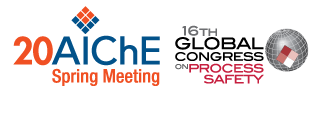

According to IEA, electricity production is the second-largest source of greenhouse gas emissions in the United States, with nearly 63% of electricity produced in the country originating from burning fossil fuels like coal or natural gas. The tax credits (section 45Q of the Internal Revenue Code) introduced by US government for capture and geological storage of CO2has created a unique opportunity for accelerated deployment of CO2capture technologies in USA. Capture technologies are available off-the-shelf; however, the associated operation and investment costs remains unacceptably high.
This paper presents a framework for development a new generation of Chemical Looping Technologies for clean energy conversion with integrated CO2capture based on experimental demonstration (laboratory and pilot scale), multiphase flow modelling and techno-economic assessment. The goals are 1) to eliminate he CO2capture energy penalty (This fundamental benefit can greatly improve the economic attractiveness and environmental performance of CCS) and 2) to deploy complementary next to wind & solar power. Two novel technologies have been developed and demonstrated successfully in laboratory scale based on this framework.
The first technology is Gas Switching Technology (GST) which offers a promising alternative to chemical looping applications for highly efficient power or hydrogen production with integrated CO2capture. This technology keeps the oxygen carrier materials in a single fluidized bed reactor where it is alternately exposed to fuel and air.
The second technology is the Internally circulating reactor (ICR) which integrates the two reactors, cyclones, loop seals and solids transport lines of the conventional chemical looping configuration into a single unit that simplifies design and operation.
The experimental demonstration of these two technologies proved a strong potential to scale-up for pressurized operation. Collaboration with key industrial partners will be crucial for pilot plant demonstrations of these technologies, paving the way for accelerated commercialisation.
